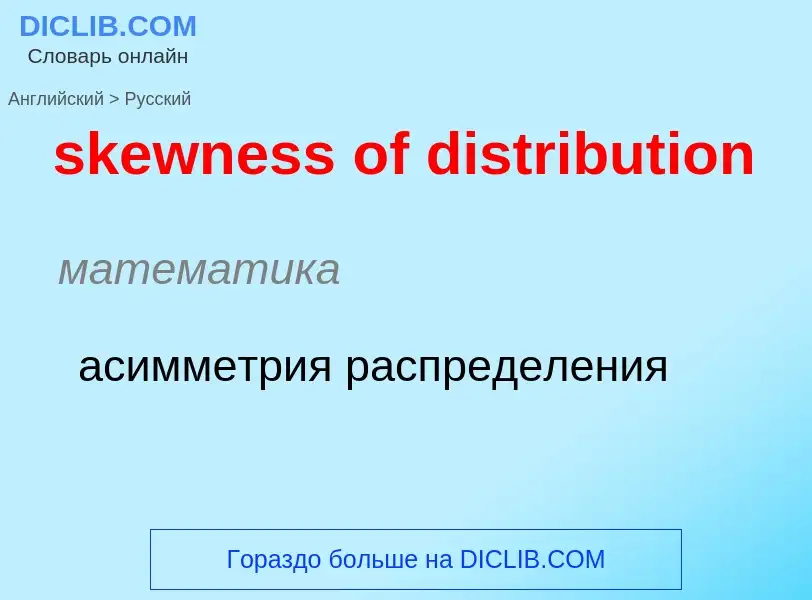Перевод и анализ слов искусственным интеллектом ChatGPT
На этой странице Вы можете получить подробный анализ слова или словосочетания, произведенный с помощью лучшей на сегодняшний день технологии искусственного интеллекта:
- как употребляется слово
- частота употребления
- используется оно чаще в устной или письменной речи
- варианты перевода слова
- примеры употребления (несколько фраз с переводом)
- этимология
skewness of distribution - перевод на русский
математика
асимметрия распределения
математика
асимметричное (несимметричное) распределение
['skju:nis]
общая лексика
асимметрия (напр. распределения)
деформация (полосы, в электрофорезе)
ассиметрия
перекос
скошенность
Смотрите также
существительное
общая лексика
перекос
скошенность
статистика
асимметрия
коэффициент асимметрии
Определение
.
Википедия
In pharmacology, the volume of distribution (VD, also known as apparent volume of distribution, literally, volume of dilution) is the theoretical volume that would be necessary to contain the total amount of an administered drug at the same concentration that it is observed in the blood plasma. In other words, it is the ratio of amount of drug in a body (dose) to concentration of the drug that is measured in blood, plasma, and un-bound in interstitial fluid.
The VD of a drug represents the degree to which a drug is distributed in body tissue rather than the plasma. VD is directly proportional with the amount of drug distributed into tissue; a higher VD indicates a greater amount of tissue distribution. A VD greater than the total volume of body water (approximately 42 liters in humans) is possible, and would indicate that the drug is highly distributed into tissue. In other words, the volume of distribution is smaller in the drug staying in the plasma than that of a drug that is widely distributed in tissues.
In rough terms, drugs with a high lipid solubility (non-polar drugs), low rates of ionization, or low plasma protein binding capabilities have higher volumes of distribution than drugs which are more polar, more highly ionized or exhibit high plasma protein binding in the body's environment. Volume of distribution may be increased by kidney failure (due to fluid retention) and liver failure (due to altered body fluid and plasma protein binding). Conversely it may be decreased in dehydration.
The initial volume of distribution describes blood concentrations prior to attaining the apparent volume of distribution and uses the same formula.





